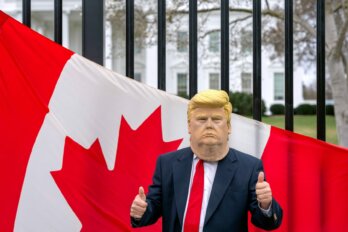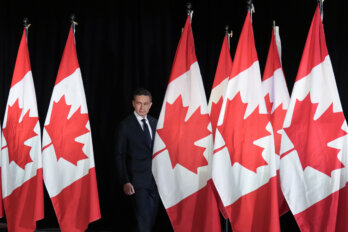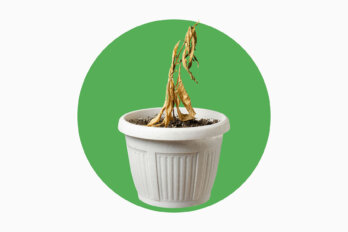No federal candidate raised First Nations expectations and hopes more than Justin Trudeau did in 2015. While other politicians had addressed our issues at leadership debates, or in parliament, Trudeau seemed to go out of his way to connect with Indigenous people and to make our issues central to his campaign. When Attawapiskat leader Teresa Spence was asking to meet Stephen Harper during her 2013 hunger strike over the housing crisis on her reserve, it was Trudeau who visited her. When he took the leadership of the Liberal Party later that year, he cited the Idle No More movement as inspiration.
His connection to Indigenous peoples appeared to go beyond symbolism. In an APTN town hall, he promised us a veto over resource development. To the Assembly of First Nations he promised a new nation-to-nation relationship. He promised to end the boil water advisories in five years. He promised to launch an inquiry into the 1,200-plus Missing and Murdered Indigenous Women and Girls. He promised us equal funding for education. He also promised to implement all ninety-four recommendations of the Truth and Reconciliation Commission.
To the Indigenous imagination, Trudeau was going to be on our side. While his father, Prime Minister Pierre Trudeau, with the aid of his Indian Affairs minister, Jean Chretien, had attempted to destroy our nations with his infamous white paper (which would eliminate Indian Status, abrogate the treaties, and break up reserves), his son appeared set to make up for that original sin. Stephen Harper helped too. The policies of his regime, such as the First Nations Financial Transparency Act, inspired a lot of anger among First Nations people, and provided fuel for the Idle No More movement. But what took that anger to the ballot box was Trudeau giving Indigenous people something to vote for. Speaking to the Assembly of First Nations, an AFN youth council member Quinn Meawasige said: “We can work towards getting the Harper government out, and having a new government that is willing to work with First Nations people on Indigenous issues.”
In response, we voted in unprecedented numbers—this, in spite of Conservative changes to the Election Act that made voting harder on reserve. Those changes included requirements for each voter to provide identification that showed their address. Unfortunately, many reserves don’t have addresses in the same way that non-Native communities do. Many more reserves have housing shortages that see extended families living in the same home, where perhaps only one or two people have their names on the bills. These changes meant that large numbers of First Nations people couldn’t vote, except with a letter from their reserve’s band council verifying their address—a process made frustrating by the fact several band councils actively discourage voting in non-Native elections. After getting the documentation, they had to go the polling place where they joined hours-long queues, only to encounter ballot shortages. And in the face of all of that the First Nations vote rose across Canada—in some communities, nearly 270 percent.
In the weeks after the election, as we saw an AFN regional chief appointed Minister of Justice, it seemed that our hope in Trudeau was justified. But then policy failures began to add up. Trudeau has shown himself to be more centrist and more in favour of resource development than had been anticipated. His speeches to Indigenous elites continued, but the principled politician who engaged with Idle No More protesters became the Prime Minister who boasted about building pipelines through our lands, saying “in one year we were able to do what 10 years of the previous government was unable to do.”
Trudeau has not followed through on his promises to First Nations people—and where he has, it has been done poorly or on a far longer timeline than First Nations people are willing to accept. It’s become clear that his engagement with us was more about virtue signalling to white liberal voters, than about genuine concern over our well-being.
Two of his government’s most recent failings, and two of the largest, are the Liberal fight against obeying the Canadian Human Rights Tribunal order to provide equal funding to First Nations children for child welfare, and the lack of a federal response to the ongoing and escalating crisis in Thunder Bay. Both bring his approach to Indigenous people into sharp focus.
In January, 2016, First Nations child welfare advocate Cindy Blackstock won her years-long battle at the Canadian Human Tribunal, which found that the federal government had discriminated against First Nations children by denying them comparable funding to what non-Native children receive in the same province. The Liberals were ordered to immediately increase funding to equal levels. They ignored this ruling, as well as the next which found that their half-measures were insufficient. They also ignored the ruling after that. After four rulings against them, the Liberals then took the issue back to the federal courts. This is a complete about-face to the Liberal position before the election, when Liberal MP Carolyn Bennett, now the Indigenous Affairs Minister said: “First Nations advocates should not have to pursue legal action to get the government to fulfill its obligations to First Nations children.” This quote comes from a speech she has since deleted from her website. Since assuming her position as Indigenous Affairs Minister, the federal government has spent $707,000 fighting Blackstock. The Toronto Star notes that this amount is “nearly twice the $380,000 needed by Wapekeka First Nation for emergency mental health care after the northern Ontario community uncovered a suicide pact last year.” The fight against Blackstock is an almost universally acknowledged point of friction between First Nations and the federal Liberals.
An equally pressing issue is the crisis in Thunder Bay. Because of the government’s failure to fund education in their home communities, remote First Nations across Northern Ontario are forced to send their youth to Thunder Bay each year for high school. The students live in disorganized and inadequate accommodation, with little to no supervision. Nine of these children have been found dead in recent years. The Thunder Bay police have yet to confirm whether the deaths were murder, nor have they acknowledged that racism was a factor. Which is no surprise: Thunder Bay police have long denied the racism evident in the city, even as their own force is under provincial investigation for attitudes that “devalue Indigenous lives,” and a Statistics Canada report revealed that the area had almost one-third of Canada’s reported anti-Indigenous hate crimes. First Nations people have been clamouring for action for years. Some have pushed for more stable housing—a request that was denied. Some young advocates pushed for high schools in their home communities. Both of these are within the purview of the Minister of Indigenous Affairs, and in both cases she has done nothing.
The blowback against these failures, and others, has been made worse by the ways that Trudeau has been speaking about First Nations to non-Native audiences. Just last week Justin Trudeau apologized for comments made in Rolling Stone about his charity boxing match with First Nations senator, Patrick Brazeau. Trudeau described his selection process that ended with him choosing Brazeau, saying: “I wanted someone who would be a good foil, and we stumbled upon the scrappy tough-guy senator from an Indigenous community. He fit the bill, and it was a very nice counterpoint.”
It’s an ugly comment that brings to mind stereotypes of Native men as rough and dangerous (a stereotype that, a year ago this month, cost one Native youth, Colten Boushie, his life when a farmer, seeing him as a threat, shot him to death while he was asking for help to change a tire). It’s also disturbing to hear Trudeau highlight Brazeau’s Indigeneity as a “nice counterpoint” to himself. That’s how the Harper government treated us. We were the “foil” Harper used in fundraising pitches that talked about greedy chiefs, and First Nations men in particular were the foil for Harper’s Indian Affairs Minister, Bernard Valcourt whose solution to the MMIW crisis was to attack First Nations men: “Obviously, there’s a lack of respect for women and girls on reserves,” he said. “If the guys grow up believing that women have no rights, that’s how they are treated.”
The Trudeau government is clearly aware of their failings with the Indigenous public. Their campaign of symbolic gestures has increased recently, with notable examples including the renaming of the Langevin Block, the handover of the former US Embassy to Indigenous people, and Justin Trudeau’s visit to the protest tipi on Parliament Hill. However symbolism cannot overcome two years of slow-motion reforms, and policy mistakes.
Post election, I was one of those First Nations people who was inspired to get active in the Liberal Party, to make sure our priorities weren’t forgotten. But between the time I fought to get nominated as an Indigenous delegate to the 2016 convention, and the convention itself—enough had happened, or rather not happened, to sour me on direct engagement with the Liberals. The party was remote and unresponsive—my outreach to my local riding association, the Indigenous Liberals, and to anyone in the party went unanswered. No items appeared on their Indigenous commission’s agenda until the last minute, and any avenue towards actively engaging with the party, or bringing forth issues was cut off in favour of a heavily scripted victory lap at the convention. It appeared that Indigenous policy was developed from the top-down. As I discovered the futility of the venture, I skipped the convention, and let my membership lapse.
There is a debate in First Nations communities about whether we should participate in Canadian politics or keep our distance. Ojibwe writer Martha Troian wrote about this controversy for Media Indigena. Quoting Mohawk scholar Taiaiake Alfred, Troian wrote:
“The idea of leaders and intellectuals promoting political energy and activism into a political party in the Canadian electoral system is harmful, according to Alfred. He says First Nation leaders need to promote the idea of nationhood instead. They talk about it all the time, and yet they are massive hypocrites by getting involved in electoral politics.” She continues: “For Alfred, First Nations individuals need to choose between one or the other.”
The AFN and many centrist and right-leaning First Nations activists, however, propose that voting is the best way to push the Indigenous agenda forward, and that an energized Indigenous voting block has the power to control enough seats to have real influence in parliament. Other First Nations thinkers like Sto:lo activist Robert Genaille take a realist approach. “We explain to our youth that we can resist the system by not participating in it,” he says, “but that doesn’t benefit us in any way. Instead, it allows us to be invisible.”
Trudeau’s outreach to First Nations, and his talk of the nation-to-nation relationship, as well as his policy proposals swayed abstainers. He showed them that you didn’t have to betray your nation by voting, that if we work in the system, devote our energies to that, we can move our Nations ahead further than we could with protest and opposition.
But today Trudeau is in the process of losing Indigenous people. And if he loses us, he takes the wager we made on Canada with him. He will have made the abstainer’s case more powerfully than they ever could. He will have proved that being Canadian and being Indigenous are incompatible, and there is only one way to engage with Canada: through confrontation.





